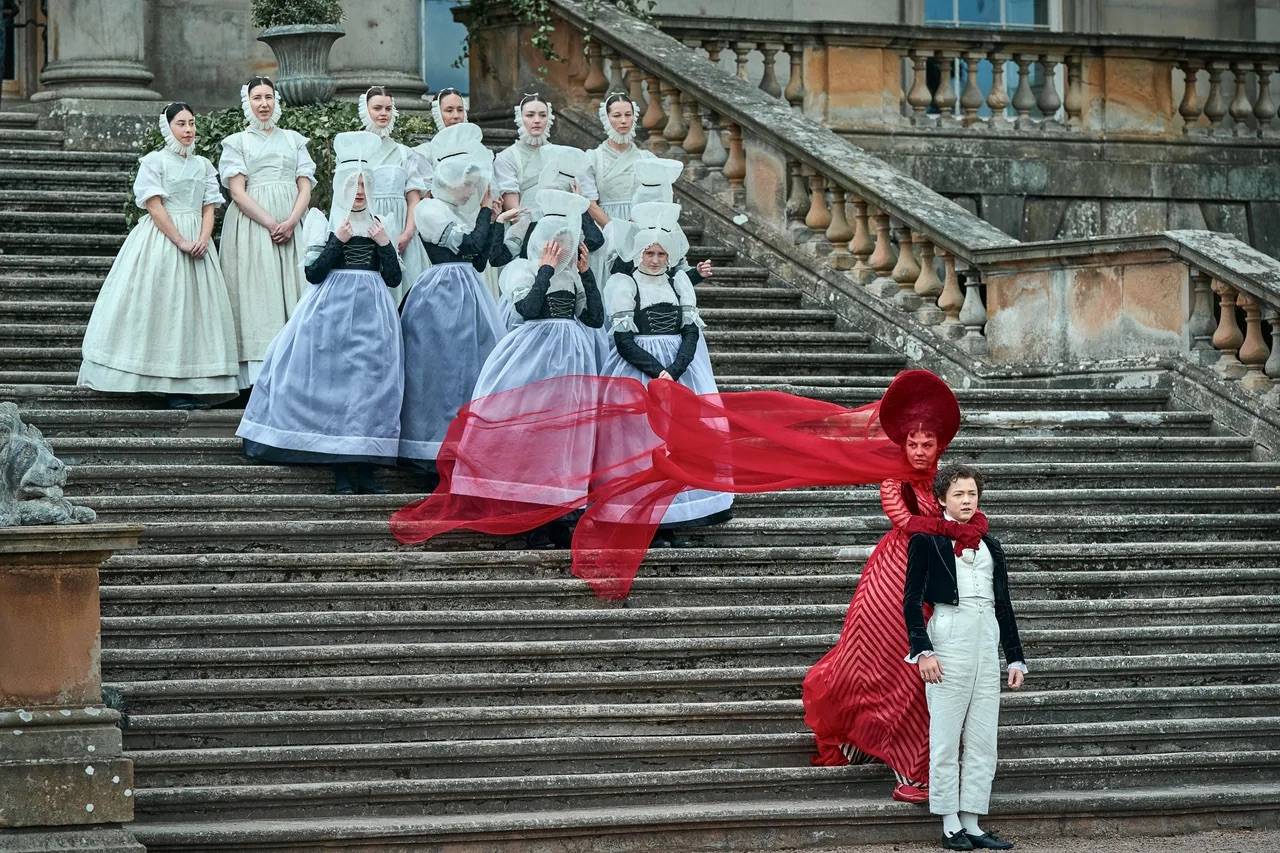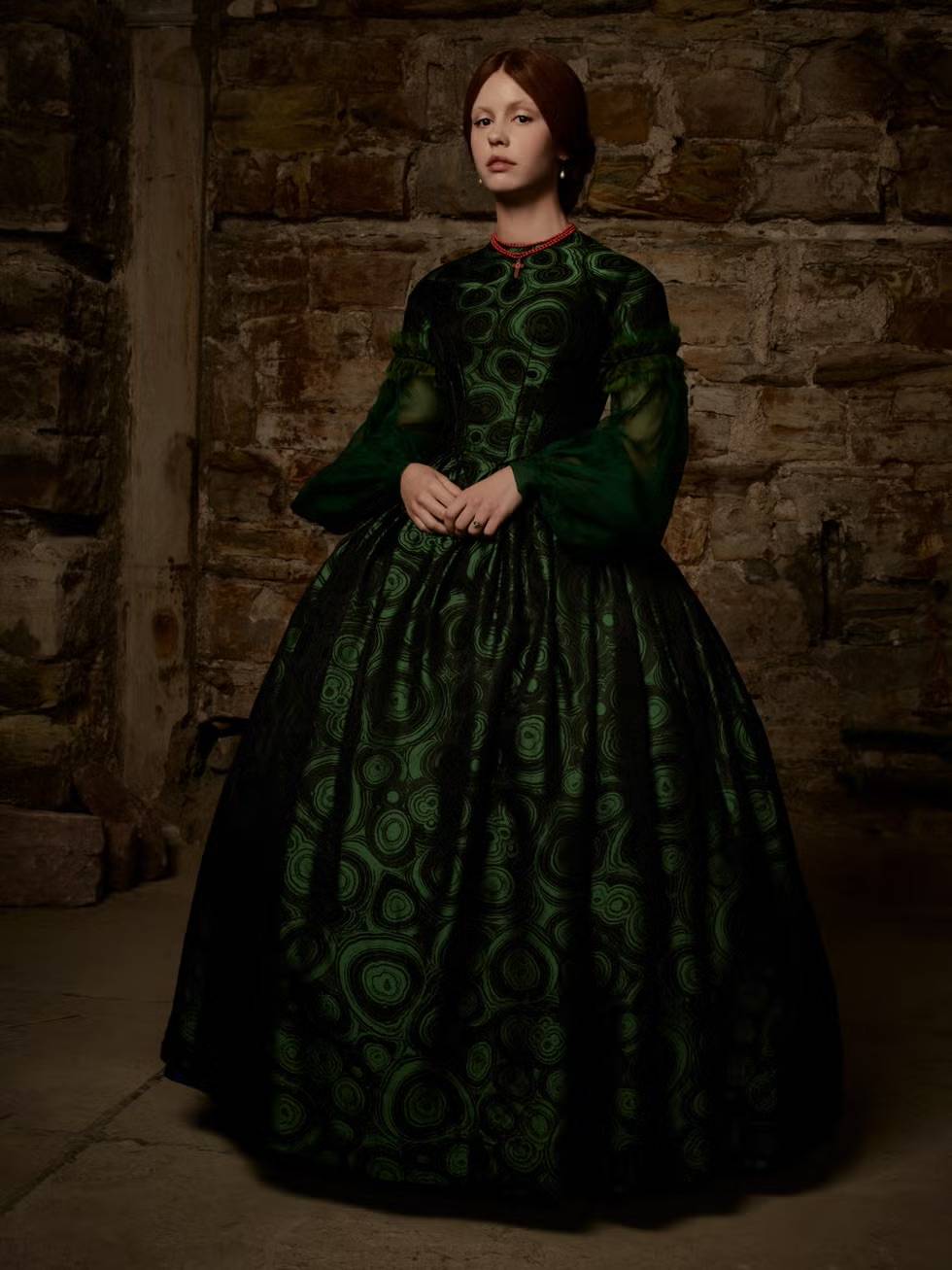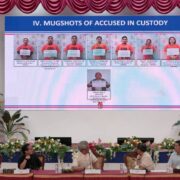Romanticism meets Gothic: the fashion in ‘Frankenstein’

By the time you’re reading this, you may have already watched “Frankenstein,” starring Jacob Elordi and Mia Goth, and likely come across countless articles praising its visuals and fashion—most of them focused on the gothic. Yet what often goes unnoticed is the interplay of gothic and romantic aesthetics in the film to shape mood, character, and story.
The gothic-romantic fashion thrives in the tension between beauty and darkness, elegance and decay. Gothic in film embodies darkness, transgression, and psychological intensity. Think Winona Ryder’s all-black, corseted ensembles in Beetlejuice (1988) or the sharp, shadowed silhouettes of Tom Cruise and Brad Pitt in Interview with the Vampire (1994). It is often performative: angular cuts, lace, and heavy fabrics externalize internal turmoil, obsession, or alienation. The wardrobe becomes a mirror of the characters’ shadowed psyche, a visual shorthand for rebellion against societal norms.
Romantic fashion, by contrast, leans toward ethereal and delicate. Mia Wasikowska’s flowing gowns in Crimson Peak (2015) or Holly Hunter’s layered, modest dresses in The Piano (1993) are suffused with vulnerability and longing. Romantic fashion softens the darkness of narrative tension, evoking tenderness, longing, innocence, and an idealized vision of love and beauty—even when set against tragic or gothic backdrops.

In “Frankenstein” (2025), costume designer Kate Hawley, known for “Crimson Peak” and “Pacific Rim,” balances gothic and romantic styles. Victor Frankenstein’s dark velvet coats, burgundy linings, and disheveled silhouettes mirror his intellect without empathy, while his red gloves symbolize the blood of his victims, a visual reminder of lives taken without accountability. These gothic elements externalize moral corruption and psychological unraveling.
Yet the romantic dimension of Frankenstein is quietly mesmerizing, though often overlooked. Mia Goth inhabits dual roles—Claire, Victor’s mother, and Elizabeth, his fiancée—draped in flowing fabrics, layered organza, and delicate textures that seem to breathe with their emotions.
Claire’s scarlet veil evokes maternal sacrifice and the inevitability of death. Elizabeth’s green gown, subtly accented with beetle-wing iridescence and ribboned layers, convey vulnerability and romantic yearning. She also wore a headpiece that draws inspiration from mid-19th-century fashion. These were often made from ostrich feathers and trimmed with small touches of silk chenille, which were glued to the tips of each feather.

Her wedding dress, with bandage-like layers mirroring the Creature’s stitched body, becomes a visual metaphor for love, empathy, and the ability to see purity where others see monstrosity. While critics focus on gothic spectacle, these romantic details anchor the film’s emotional core.
Though straying from strict period accuracy, Hawley’s otherworldly wardrobe demonstrates the power of costume design to tell a story without dialogue. Every costume balances gothic and romantic elements, visually articulating the narrative’s core conflicts—creation and destruction, love and loss, ambition and mortality. Elizabeth’s soft, lacy forms contrast Victor’s rigid, geometric tailoring, further reinforcing the emotional and thematic tension. While critics focus on gothic spectacle, it is these romantic details that quietly anchor the film’s emotional heart, giving the story its subtle, haunting resonance.

















